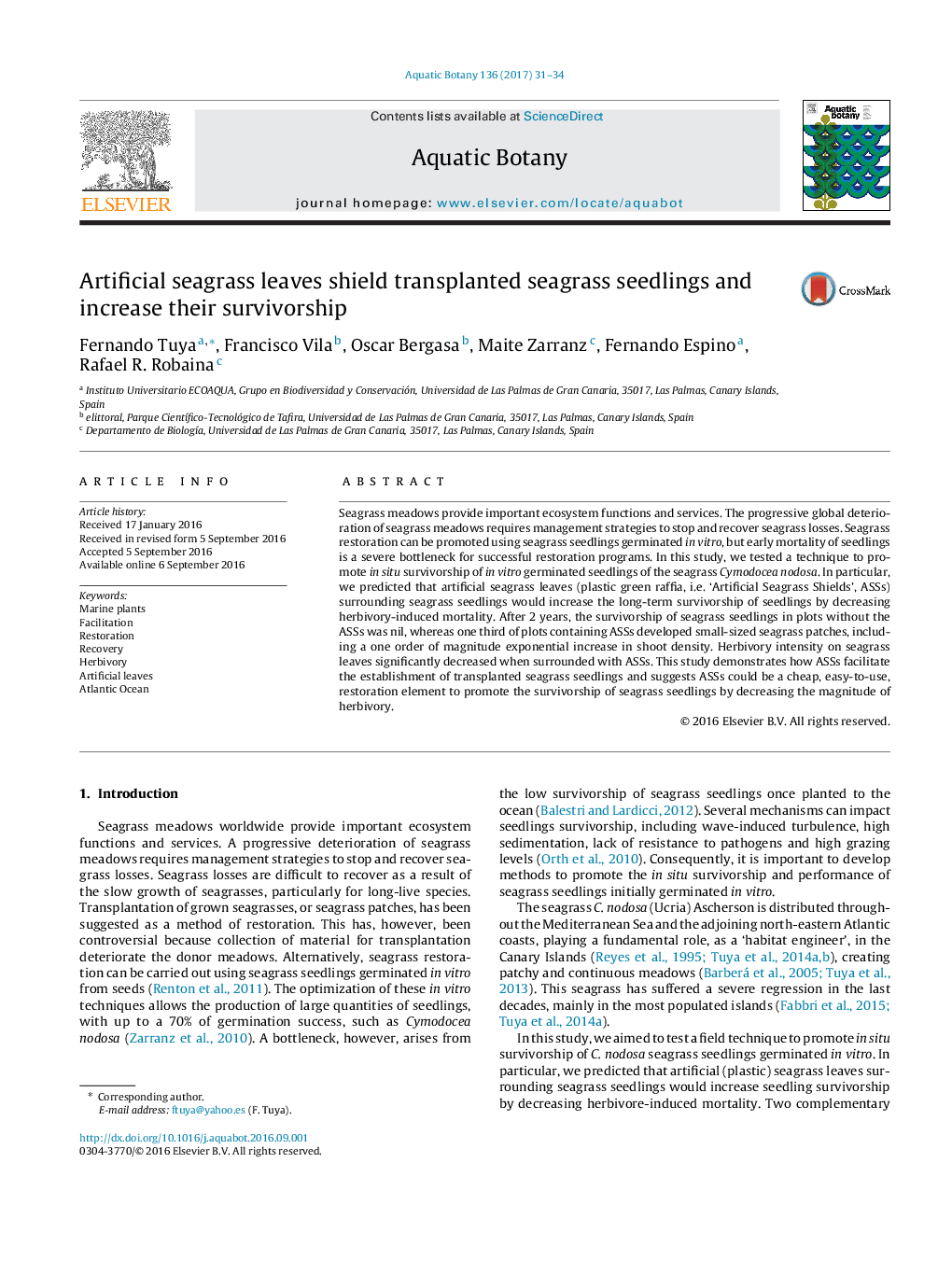| Article ID | Journal | Published Year | Pages | File Type |
|---|---|---|---|---|
| 4527517 | Aquatic Botany | 2017 | 4 Pages |
•Mortality of seagrass seedlings limit restoration.•Artificial seagrass leaves surrounding seedlings promote survivorship.•Artificial seagrass leaves are a cheap, easy-to-use, restoration element.
Seagrass meadows provide important ecosystem functions and services. The progressive global deterioration of seagrass meadows requires management strategies to stop and recover seagrass losses. Seagrass restoration can be promoted using seagrass seedlings germinated in vitro, but early mortality of seedlings is a severe bottleneck for successful restoration programs. In this study, we tested a technique to promote in situ survivorship of in vitro germinated seedlings of the seagrass Cymodocea nodosa. In particular, we predicted that artificial seagrass leaves (plastic green raffia, i.e. ‘Artificial Seagrass Shields', ASSs) surrounding seagrass seedlings would increase the long-term survivorship of seedlings by decreasing herbivory-induced mortality. After 2 years, the survivorship of seagrass seedlings in plots without the ASSs was nil, whereas one third of plots containing ASSs developed small-sized seagrass patches, including a one order of magnitude exponential increase in shoot density. Herbivory intensity on seagrass leaves significantly decreased when surrounded with ASSs. This study demonstrates how ASSs facilitate the establishment of transplanted seagrass seedlings and suggests ASSs could be a cheap, easy-to-use, restoration element to promote the survivorship of seagrass seedlings by decreasing the magnitude of herbivory.
